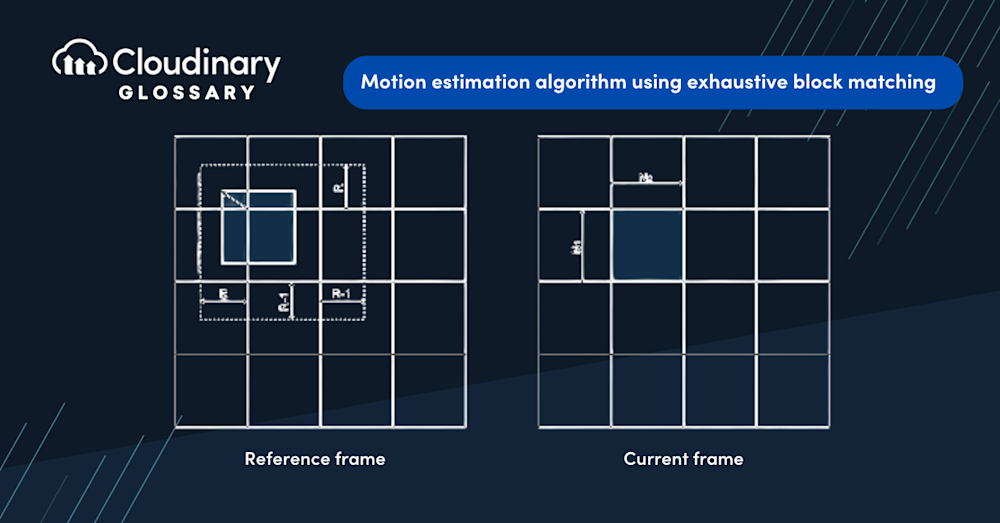What Is Motion Estimation?
Motion Estimation is a vital technique used in various disciplines, such as video encoding, computer vision, and robotics, to assess and predict the movement of objects within a sequence of images or frames. At its core, motion estimation involves determining the vectors that best describe the shift of pixels from one frame to another, which we call “motion vectors”. By quantifying these changes, motion estimation helps to reduce redundancy in the stored information, minimize bandwidth usage, and improve the quality of video compression for efficient transmission and playback.
In video encoding, for example, motion estimation allows us to take advantage of the temporal redundancy present within consecutive video frames. By identifying and encoding only the differences between these frames, we can significantly reduce the amount of data required to represent the video sequence. This not only makes video compression more effective but also maintains visual quality with fewer artifacts. Additionally, motion estimation plays a crucial role in applications like tracking moving objects in surveillance systems or estimating the real-world movements of autonomous robots, making it an essential technique in several technical domains.
How Motion Estimation Impacts Videos
Motion Estimation significantly influences videos’ quality and efficiency on several fronts. By predicting and representing the variance between frames, it optimizes the video transmission process, thus impacting various aspects of videos. Here’s a look at some of the key influences:
- Storage Efficiency: By encoding only the differences between frames, rather than entire frames, motion estimation drastically reduces the storage requirements of video files.
- Transmission Speed: The efficient compression achieved with motion estimation allows for quicker transmission of videos over networks, which is especially significant for streaming applications.
- Video Quality: Efficient motion estimation also helps maintain high visual quality. By accurately predicting motion, it can prevent noticeable artifacts and jitters often associated with video compression.
- Interactive Applications: In fields like video conferencing or gaming, where low latency is crucial, motion estimation helps ensure a smoother and more interactive user experience.
Understanding these influences can prove pivotal for developers and professionals working with video encoding and transmission, influencing their choice of techniques and tools for motion estimation.
The Different Techniques of Motion Estimation
There are several techniques in motion estimation, each with its unique strengths and use cases, that utilize different algorithms for assessing and predicting the movement between frames. Below is an overview of some commonly-used methods:
- Block Matching Algorithms (BMA): These are the most frequently used techniques which include Full Search (FS), Three Step Search (TSS), and Diamond Search (DS) among others. BMAs compare distinct blocks of pixels in successive frames to find the best match, making them suitable for robust and efficient video encoding.
- Optical Flow Methods: Techniques such as Lucas-Kanade and Horn-Schunck methods fall under this category, which measure the apparent velocities of pixel intensity patterns in a video sequence. These are often utilized in computer vision tasks like object tracking.
- Pel-recursive Algorithms: This method aims to estimate motion at a sub-pixel level, making it well-suited for applications demanding high accuracy.
- Frequency Domain Methods: Using this approach, the motion information is extracted in the frequency domain, generally applying techniques like phase correlation.
By selecting the right technique suited for a particular task, developers can significantly optimize the output and improve the efficiency of their motion-related applications.
Optimizing Motion Estimation with Cloudinary
To sum up, motion estimation is an imperative cog in the wheel of diverse areas like video encoding, computer vision, and robotics. Its various techniques, ranging from Block Matching Algorithms to Frequency Domain Methods, serve as fundamental tools for different tasks in these fields. By understanding motion estimation’s essence and adopting the appropriately suited technique, developers can harness its intrinsic potential to reduce redundancy, optimize storage, and boost the overall efficiency and visual quality of video sequences.
As you venture forth in your video-processing endeavors, remember that tools like Cloudinary can significantly streamline your workflow. Cloudinary supports a broad spectrum of video transformation and optimization operations, allowing you to seamlessly manipulate and enhance videos without compromising on quality. With its robust tools and extensive capabilities, you can focus less on the intricacies of video processing and more on materializing your innovative ideas.
Don’t just adapt to the digital revolution – embrace it. Start with Cloudinary today and let this be your powerhouse for exceptional content delivery.
Check Out Our Tools That You May Find Useful:



